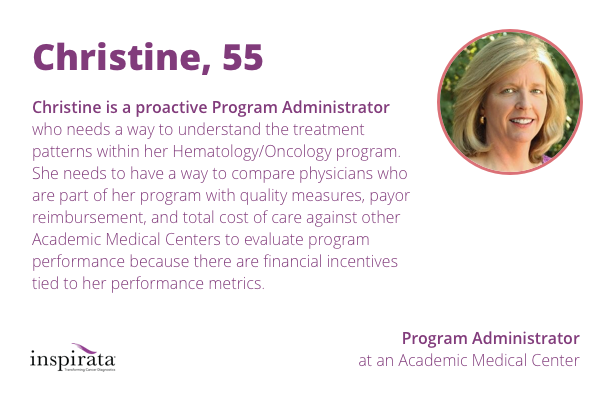Overview
Our user experience team follows a systematic approach to creating empathy tools such as personas and user journeys. We then use these, along with other strategic factors, as the basis for product ideation and validation. Through our process, we attempt to understand how users interact with their current solutions, their desires, the jobs they need to perform, their pain points and motivations, and emotional states along the way.

The Problem
The product team was tasked with meeting specific business objectives around the cancer informatics space. We needed to identify and understand the users and customer motivations and frustrations before creating solutions targeted to the users needs and business objectives.
Project Goal
Understand the users and their situations with a high-enough level of confidence to build empathy tools for use in product discovery and ideation. These learnings are meant to support our efforts to build cancer informatics services and tools that empower and delight clinicians, researchers, and administrators.
By identifying and understanding user behaviors, we start to develop a sense of the features, application form factor, information architecture, and the necessary interactions needed to benefit the users.
Research Methods & Process
General Research
This is where our divergent thinking came into play - going wide. Much like researching a product you are about to buy, we started by exploring trusted resources, such as learning from compliance bodies, professional associations, training institutions and regulatory publications. We developed an idea of who is involved, what they do and why, along with the general landscape. This step only scratches the surface in terms of our overall research effort by laying down the foundation of knowledge in a repository for all team members to access.
Subject Matter Expert Interviews
The user experience team members utilized Inspirata’s at hand resources; our in house data scientists, cancer researchers and oncology clinicians. We tackled the interviews using best practices - one facilitator who is prepared and keeps the conversation flowing and another researcher taking notes, recording, and following up with questions at the end.
Once we transcribed these interviews and created findings documents, analyzing qualitative data, we understand what types of people and roles we wanted to target for further learnings.
User Interviews
The team then started to converge our learnings and we began to reach out to people who fit specific user roles. And by utilizing our network, we were able to set up and facilitate conversations within days that lead to further findings documents. Without our network, nailing down medical oncologists, would have been extremely challenging due to the nature of their jobs and schedules.
We wrote the targeted interview scripts, scheduled the sessions for times convenient to the users, and facilitated the interviews with a lead and note-taker. While each conversation brought new learnings, patterns of jobs to be performed, motivations, and common frustrations started to emerge.
Proto-personas
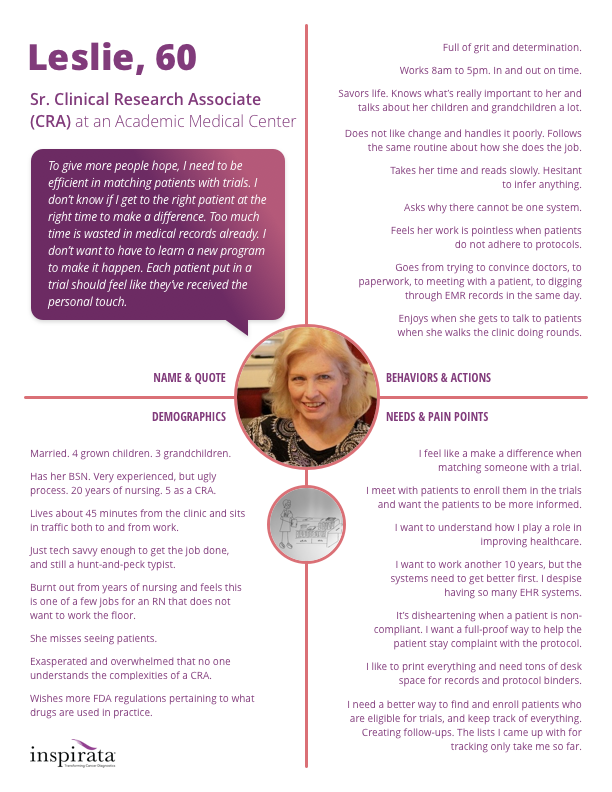
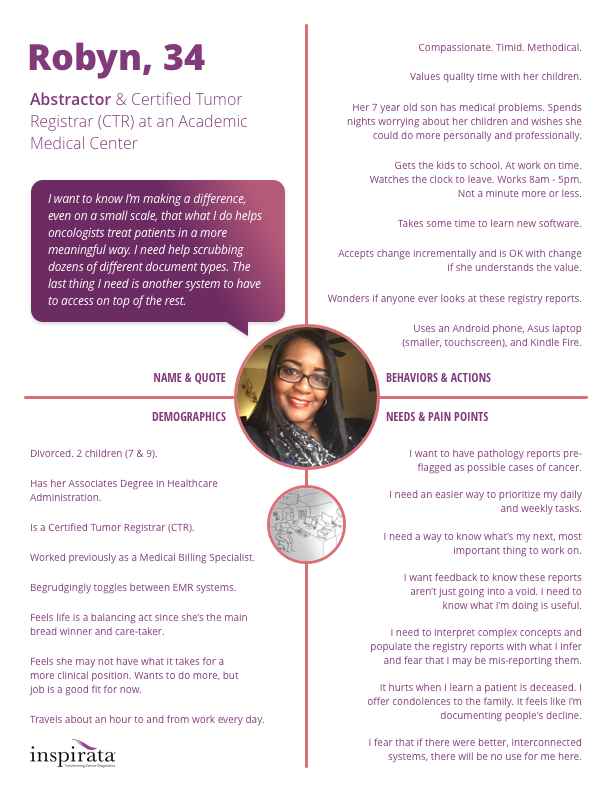
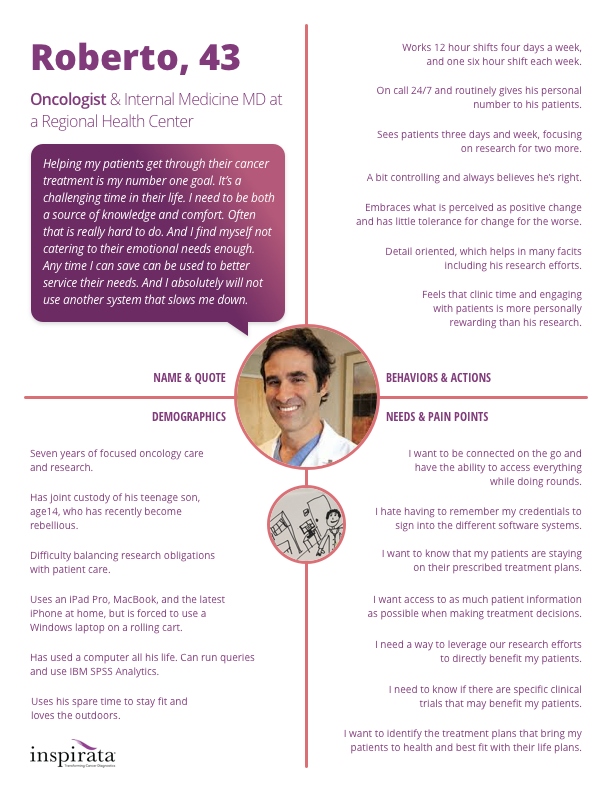

Users Roles Identified
Through this research we identified the following people and roles for deeper understanding:
Abstractor: Cancer registrars are responsible for compiling and reporting data from all the medical facilities that treat a patient, reporting the findings to governing bodies, and following the patients progress until their passing.
Medical Oncologist: A clinician who has special training in diagnosing and treating cancer in adults using chemotherapy, hormonal therapy, biological therapy, and targeted therapy. A medical oncologist often becomes the main healthcare provider for someone who has cancer.
Clinical Research Associate: Clinical research associates help to organize and monitor the different phases of clinical trials. Key responsibilities include: matching patients with active clinical trials, ensuring patients follow trial protocol, briefing appropriate trial investigators (clinicians, researchers).
Cancer Researcher: Cancer researchers are medical scientists and Phd students who coordinate and conduct research on carcinoma (cancer) through studies and experiments.
We also identified two secondary users and stakeholders and planned the creation of user statements for use as light-weight, but effective, empathy tools understand their primary motivations.
Proto-persona Workshops
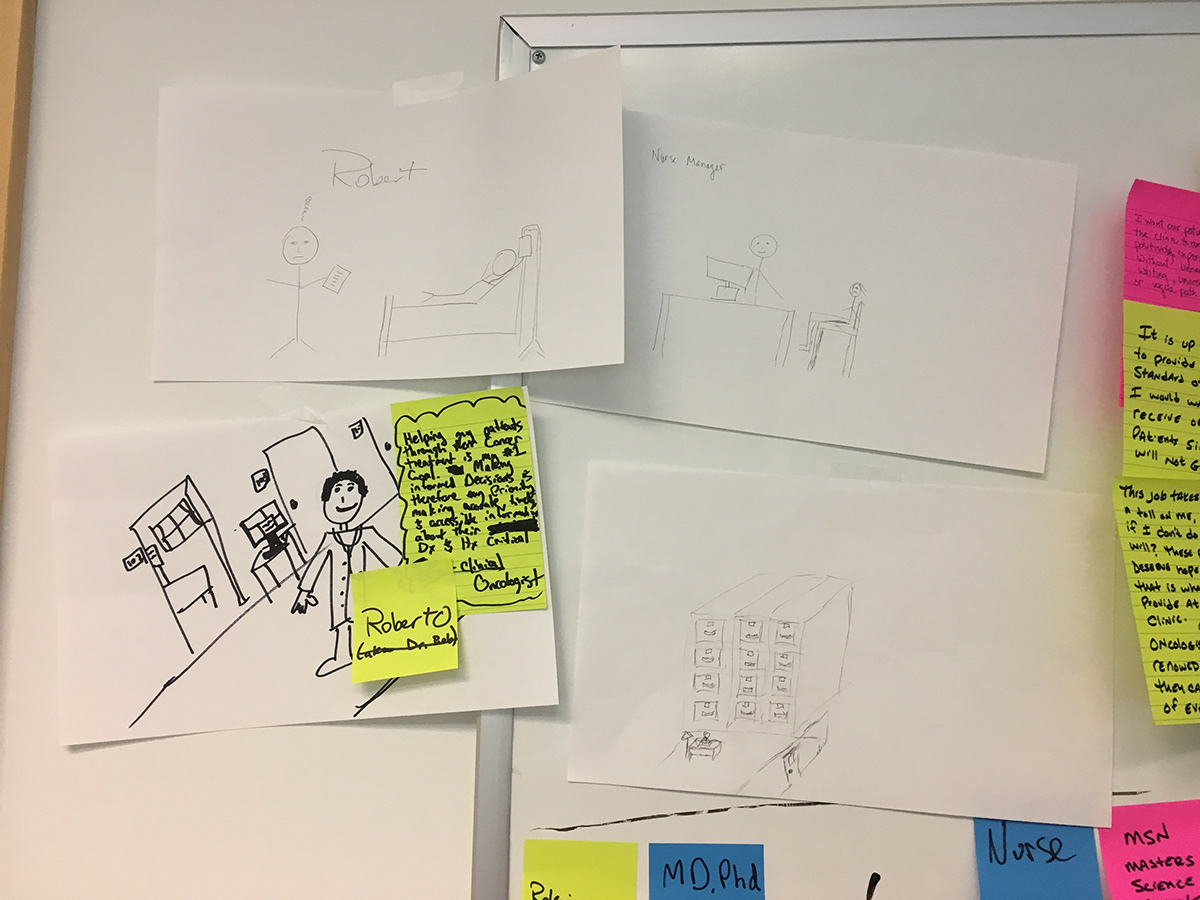



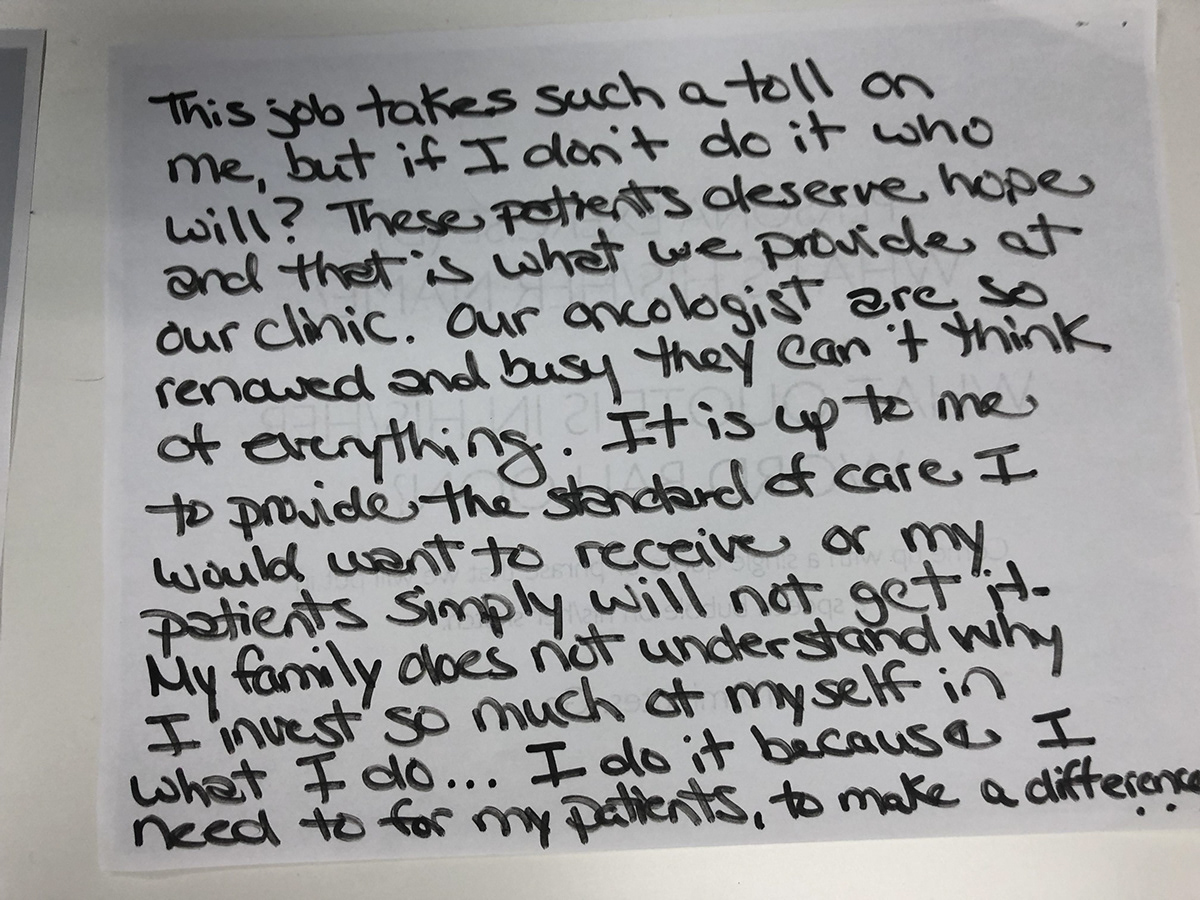


Ethnographic Research
Even more challenging than nailing down medical professionals for user interviews, is actual in-person shadowing and contextual interviews within a facility to see how these people operate. The user experience team was able to leverage a reference client through the sales group. This opened the door to shadowing oncologists, oncology nurses, and patients through a large cancer facility.
Shadowing
In order to set up for the shadow session we first needed a BAA, our HIPAA and blood borne pathogen certification to allow us in the facility and in the room with patients. We then prepared our field notes and materials as well as proper recording devices. Close communication and coordination between team members is especially important when dealing in live environments with patients as you want to interfere as least as possible.
Each team member was assigned a specific oncologist that they were to follow for the start of their shift from workup through evaluation and encounters and the oncologists debrief. This shadow session was the true source for our user journeys. We made sure to understand the environment, the interactions, the objects, the users, specific pain points, and key moments.
‘What does it look like? What does it feel like? Is it busy? Is it noisy? What do users keep within their reach?’
“We spend a lot of time designing the bridge, but not enough time thinking about the people who are crossing it.”
Dr. Prabhjot Singh, Director of the Arnhold Institute for Global Health, Mount Sinai Health System
Contextual interviews
By having users answer questions in the environment they in which they perform their duties, they are much more inclined to be specific about their pain points and answers. Our researchers pay attention to where they are pointing on the screen and how they sound when they explaining something that is helpful or bothersome to them. These insights allow for a true 1:1 dive into the problems at hand.
Cross-Functional Workshops
The user experience team along with product management spent two full day workshops with a cross functional team. The facilities team consisted of clinicians, their support staff along with the informatics team. The workshop worked through general problems and ideation of potential solutions.
When working with cross-functional teams, members of our research team tasked with facilitation needed to be prepared and open to change throughout the workshops. Having certain activities at hand is vital to allowing the path to go smoothly. These workshops were not rigid as a design sprint may be, but it did follow an orderly process through ideation.
The first workshop was before the shadowing of oncologists and the contextual interviews which laid a good foundation going into those research activities. A second workshop was done after the personas and user journeys were created so the team was able to validate and adjust those workflows and identify further problems. As we diverged on the problems at hand, this allowed us to better understand their specific situations and lead to identification of feasibility and tech constraints inherent to their institution.




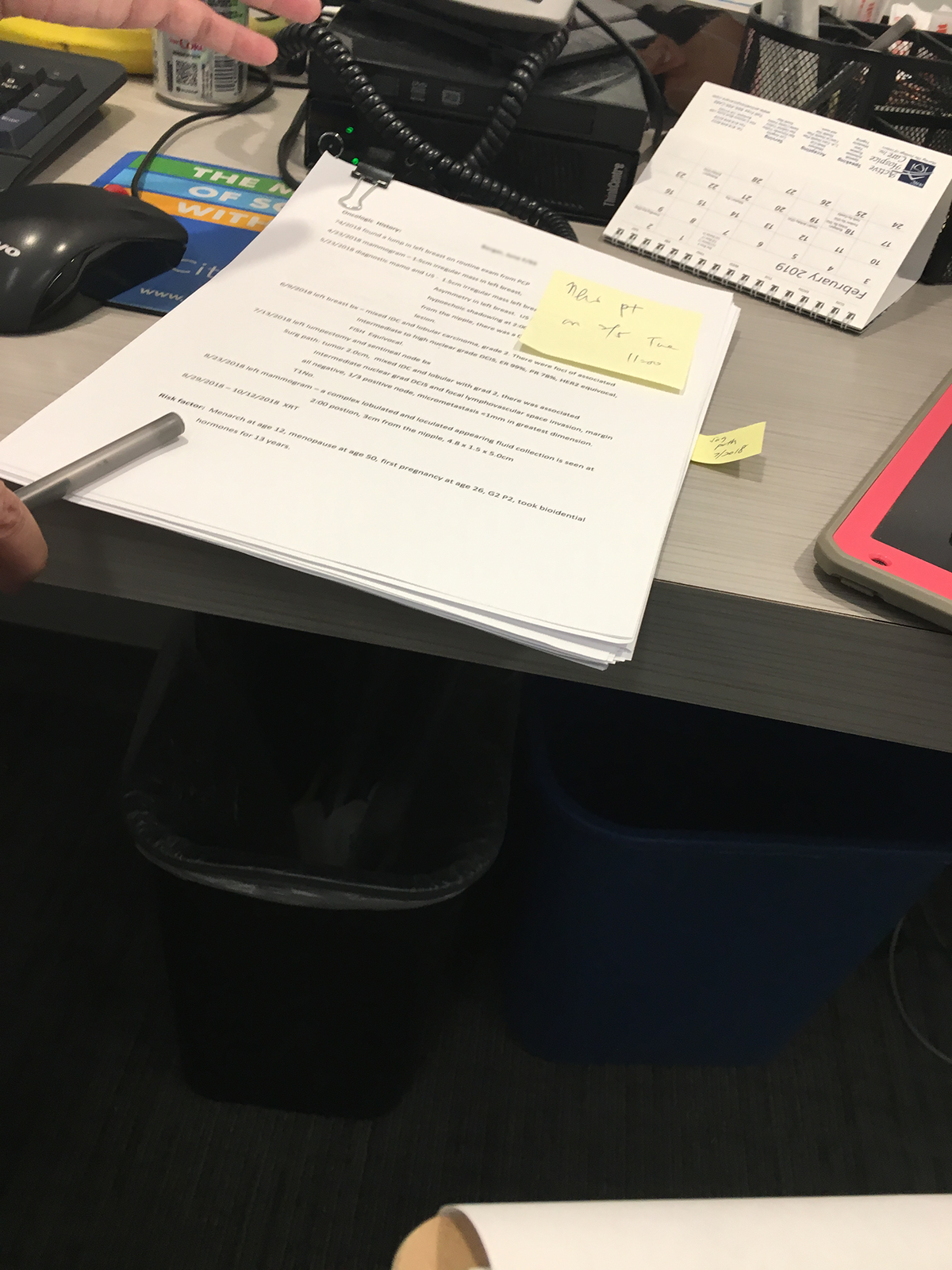

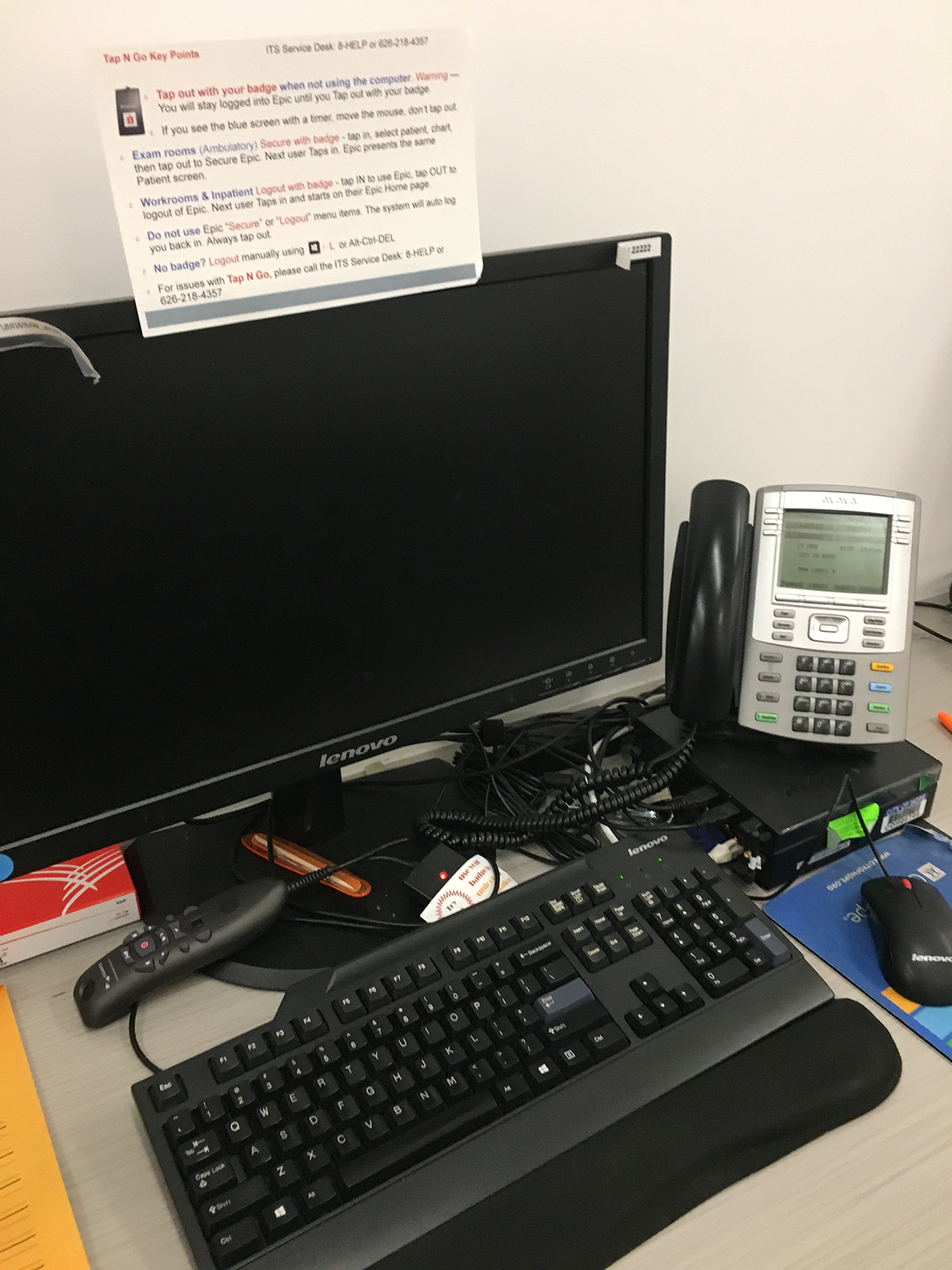


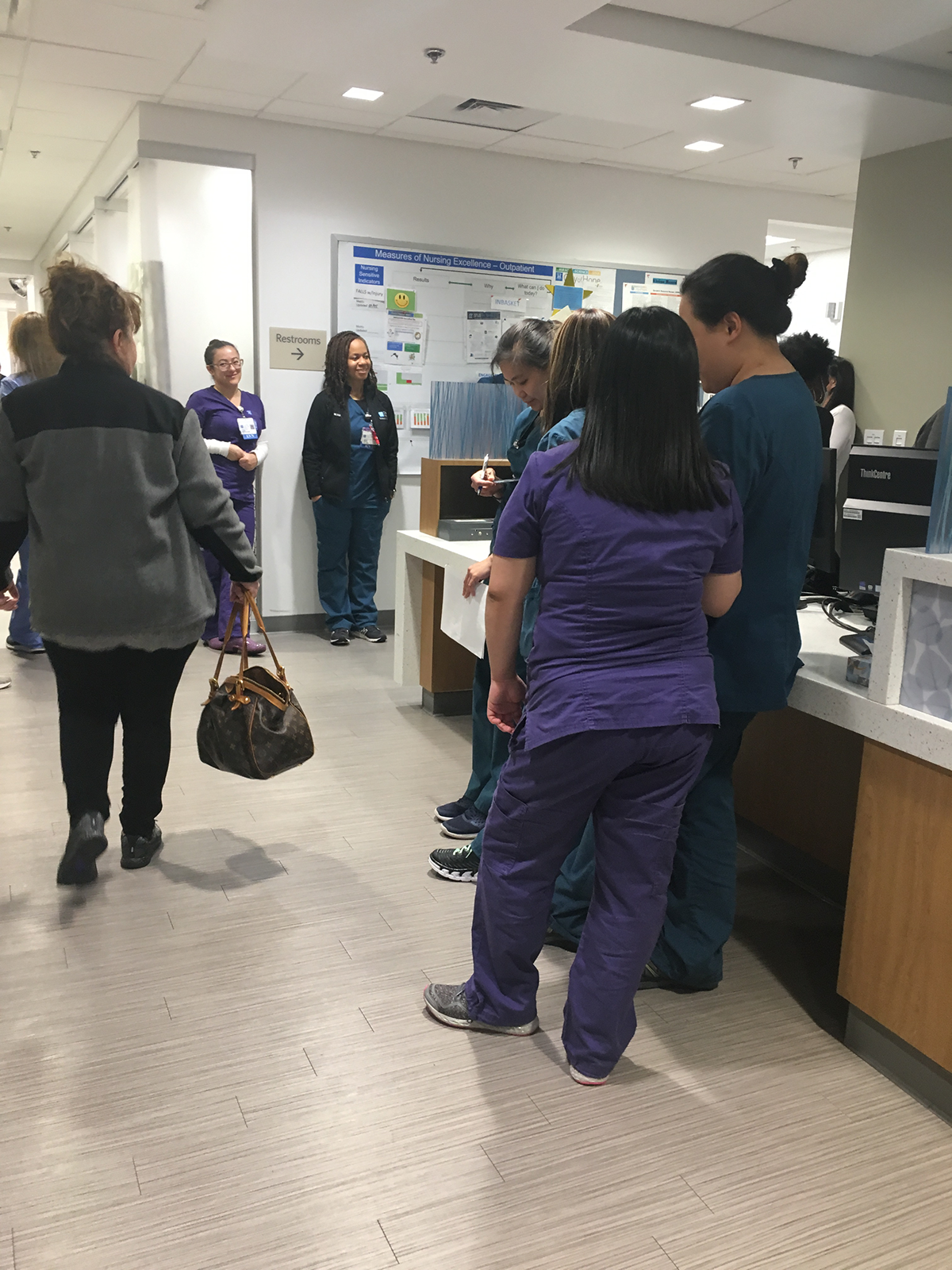
User Journeys
Debrief
Once the activities were complete we immediately audio record ourselves openly talking about findings while also asking each other questions. Like a dream fades after a certain amount of time being awake, these key insights can do the same - it is important to get them out of your head and to discrete findings. We compiled our research from our field notes and each other recordings into a single repository on confluence.
Creation
Knowing we needed to meet with the cancer facility team we needed a quick turnaround of user journey artifacts for validation the next day. That is when we broke down the workshop into sticky notes and converted them to a central format. Using the prior research for personas we were able to hypothesize and calculate how each user may be feeling throughout the user journey. We start by mapping out all known steps, how they intertwine, and then boil it down to around 8 to 13 steps in their journey. Noting the interactions, emotions, and important events along the way. This allows us to easily convey their story to others and build empathy for the users.
The user journeys start with a concise scenario and explicitly stated goals and expectation what the user needs to accomplish for them to be successful. This sets the stage as to the situation the user is in and their needs and drivers. Each user journey is broken down into stages that identify groups of time within a given workflow. Within each stage, the specific steps and actions performed by the user are mapped—how they connect and flow into one another, who they interact with, and important notes to color the landscape.
The most important information that we display at the step level is the users emotional state corresponding to each step along the way. Their feelings of joy, frustration, and times of a more neutral emotional state. The users emotions at each step in the process will ultimately help us identify areas to improve.
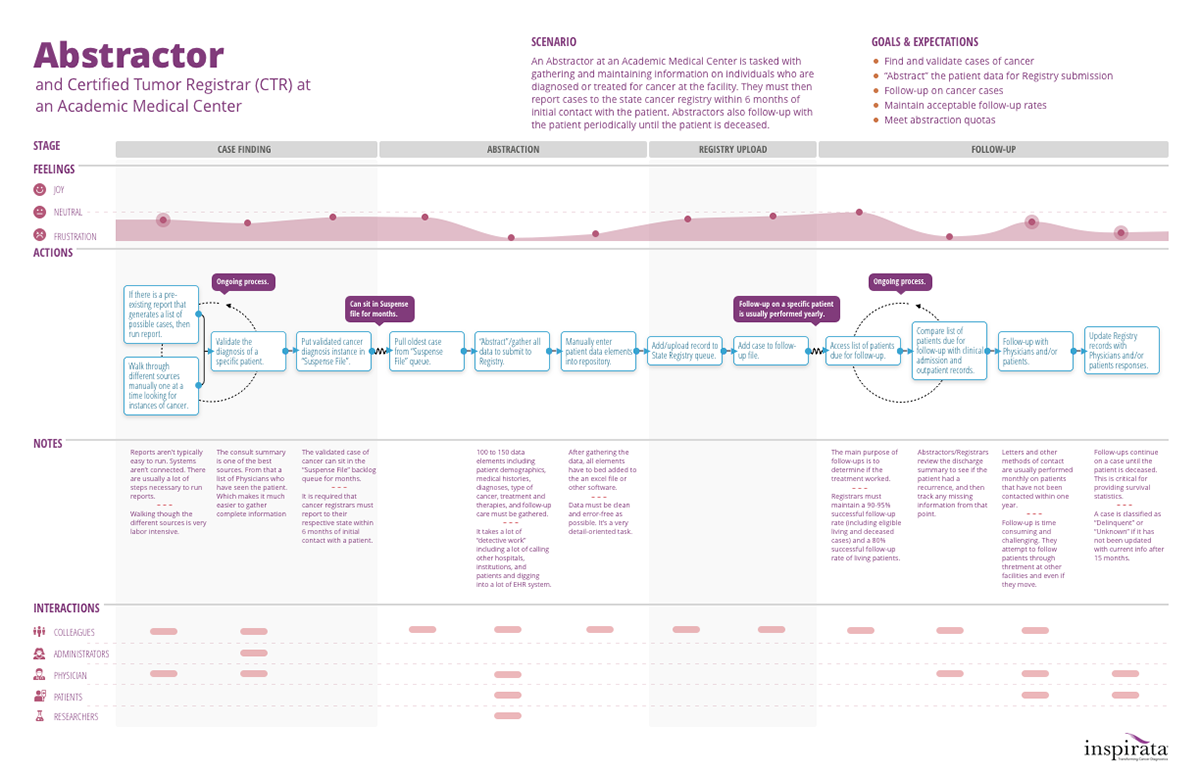


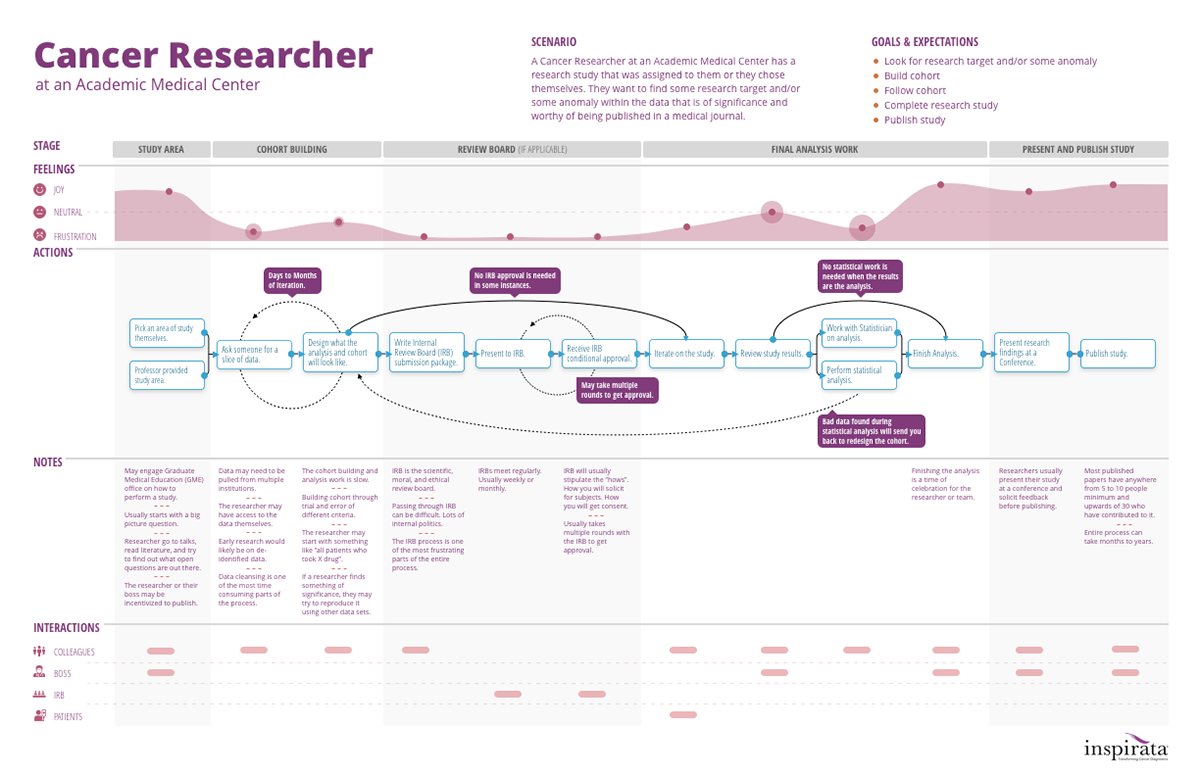
User Journey Workshops
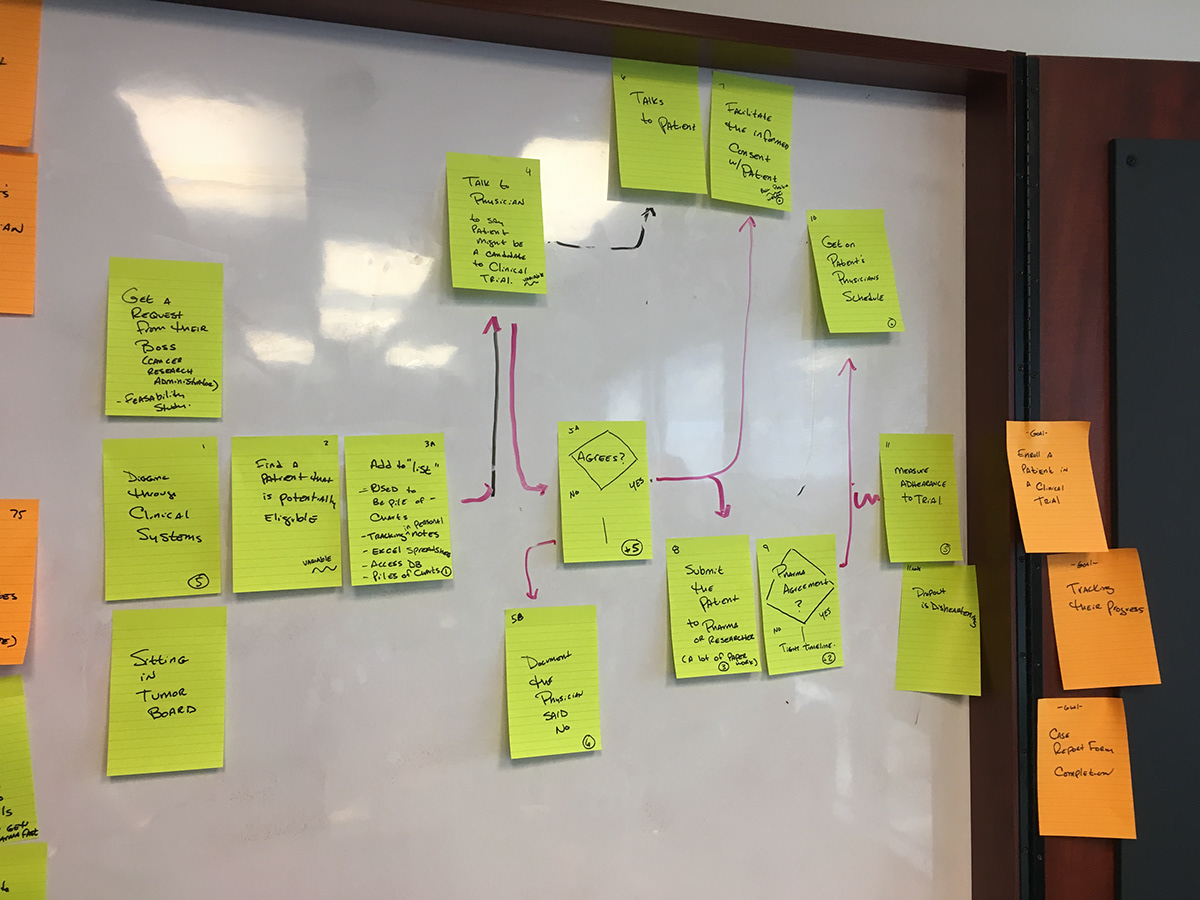
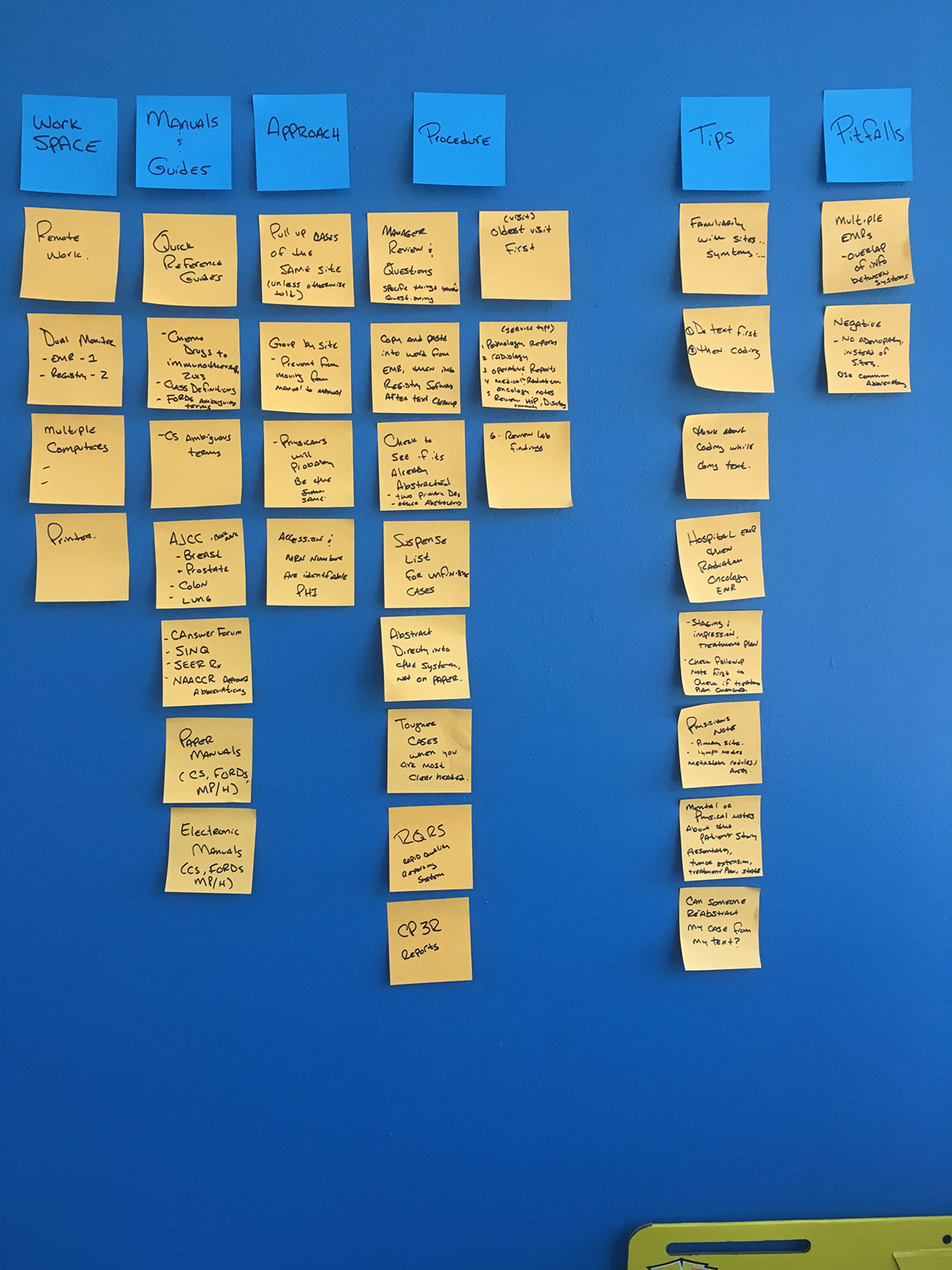



Workflow of a Medical Oncologist

User Statements
User Statements were created for users who may use the products targeted for MVP on an infrequent basis. We use these user statements to understand the primary motivations of secondary and tertiary users. Proto-personas may be created in the future if and when we create more targeted solutions for these users.
User Statements were created for users who may use the products targeted for MVP on an infrequent basis. We use these user statements to understand the primary motivations of secondary and tertiary users. Proto-personas may be created in the future if and when we create more targeted solutions for these users.

